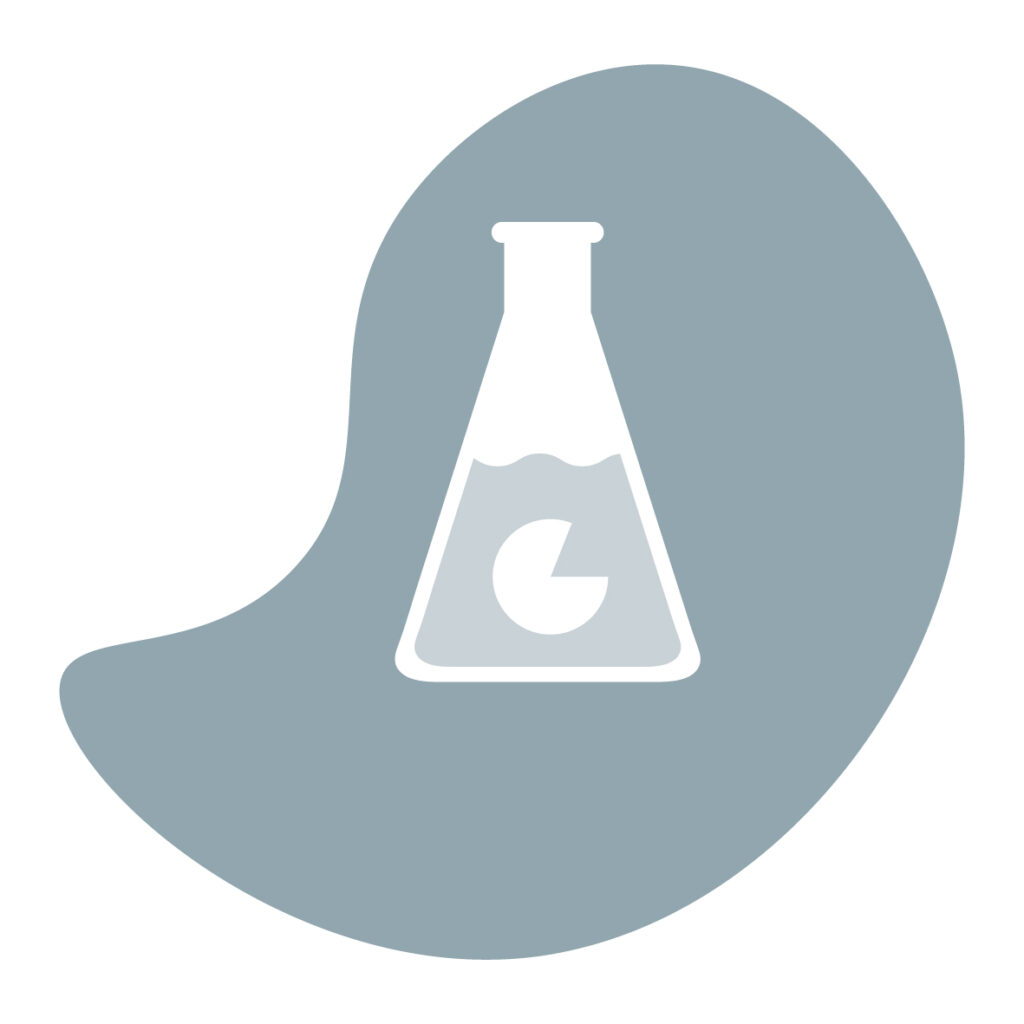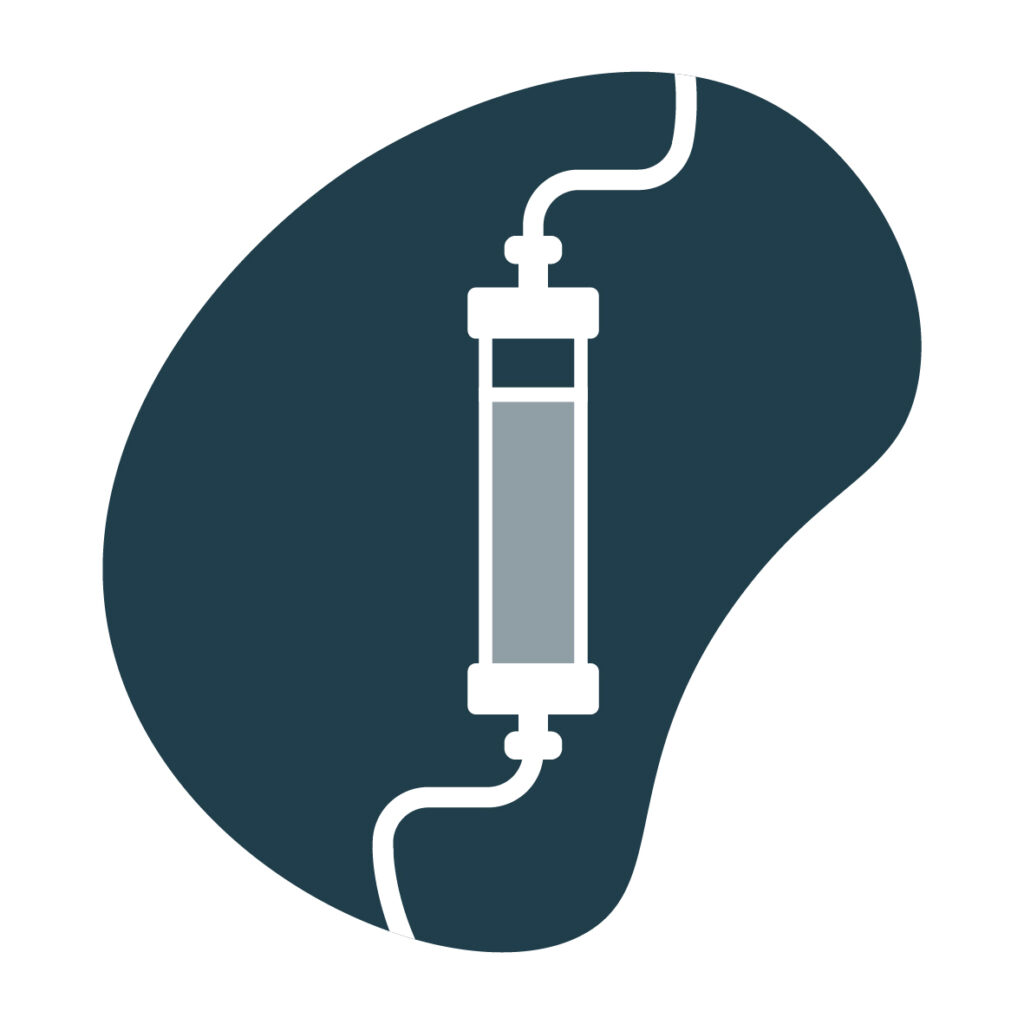Research Subunits
The aim of DesmolPro
The central hypothesis of FOR 5730 is that DES will fundamentally affect two critical aspects of bioprocesses: (i) the reactivity and stability of biocatalysts and (ii) the downstream processing. Development and intensification of bioprocesses, therefore, require a different approach than classical processes using aqueous, organic, and multi-phasic systems and, most importantly, require seamless integration of different disciplines. FOR 5730 explicitly addresses these two aspects by taking a holistic circular approach first to understanding and then to developing efficient and simultaneously sustainable processes. The circular strategy will lead to gaining a deep understanding while designing from molecules to processes and vice versa.
Overall, FOR 5730 will examine the following three central challenges to gain new insights into DES-based biocatalytic reaction systems:
- Shifting away from predominantly empirically driven studies to the integrated use of predictive methods, both solvent- and protein-based, with a concurrent consideration of reaction and process engineering tasks.
- Increasing the currently low understanding of structure-function relationships of enzymes in different solvents by systematic investigation of fitness landscapes of enzymes and catalytic peptides regarding molecular interactions with the bulk phase itself, which will reveal crucial parameters for the biocatalytic conversion in DES-based solvent systems.
- Understanding and controlling solvent properties during downstream processing with the explicit aim of recovering and reusing DES-based solvent systems.
FOR 5730 will investigate these challenges using selected biocatalytic reaction systems from oxygenases, decarboxylases, transaminases, and amine dehydrogenases. This approach is chosen to ensure efficient use of the DESs with explicit reuse of the DESs after yielding the desired products, without any need for complete or partial disposal of the used DESs.

COMPUTATIONAL UNIT
DES Fundamentals – Computational design and research data management
The first methodology of FOR 5730 explores molecular modeling of DES-involved media, providing a large design space based on the selection of individual DES components, their molar ratios, water content, temperature, pressure, and substrates/products. This wide range of parameters thus leads to a high degree of freedom to design the thermophysical properties of the reaction media, such as viscosity, substrate solubility and diffusion, and thermodynamic activity that consequently affect enzyme kinetics and reaction thermodynamics. The solvent composition influences protein structure and dynamics and hence impacts the substrates’ enzyme activity, stability, and binding affinity.
Molecular simulations will provide high-resolution information on the thermodynamic boundary conditions and transport properties under which the catalytic mechanisms take place, something that experiments alone cannot provide. Handling the data generated from biocatalytic reactions and bioprocesses at different research labs is a grand challenge currently hampering us in harnessing the knowledge of DES-involved enzymatic synthesis. To overcome this limitation, the second approach of the COMPUTATIONAL UNIT provides a standardized data handling and reporting method that will enable reproducibility. Thus, FOR 5730 will be a lighthouse for the standardization of data exchange (i) to integrate experimental data gathered from the thermophysical properties of DES-water mixtures with the data from molecular dynamics simulations and (ii) to report the reaction conditions and the measured time course of substrate/intermediate/product comprehensively that will be used for enzyme kinetic modeling and consequently for determination of kinetics parameters. Specific research focuses of this subunit are:
- Analysis of thermophysical properties of DES-based media to guide structure-property relations of all systems of FOR 5730.
- Molecular simulation of DES-biocatalyst interactions to understand solvent composition effects in a large design space.
- Achieving consistent data reporting and handling of meta-data to elucidate DES-biocatalyst interactions and the properties of the enzymatic reactions and processes..

BIOCATALYSIS UNIT
Customized biocatalysis in DESs – Biocatalysis and protein engineering
The knowledge from molecular simulations generated in the COMPUTATIONAL UNIT will be employed in BIOCATALYSIS UNIT in three model reaction systems. Research targets in-depth analysis and understanding of DES-based media, exploring the mass transfer characteristics of the solvent composition and kinetics of the enzymes in (de)carboxylations, oxyfunctionalizations, and amine synthesis. Herein enzymes cover (a) biocatalysts from representative enzyme classes, (b) systematic and fully sequenced mutant libraries, and (c) catalytic peptides.
For protein design, the obtained data will provide the basis for cooperation on the in silico modeling of solvent effects (COMPUTATIONAL UNIT) on enzymes and catalytic peptides. On the other hand, the set of enzymes’ variants and catalytic peptides with different activities and stabilities will serve as training sets for different process concepts (ENGINEERING UNIT) of FOR 5730. This subunit will provide selected case studies to cover synthetically interesting reactions leading to achiral or chiral compounds. The experimental outcomes gathered in DES-based media on the activity, stability, and kinetic parameters of enzymes, mutants, and catalytic peptides will be fed back to the COMPUTATIONAL UNIT for modeling of DES-biocatalyst interactions so that (i) customized solvent compositions can be designed and (ii) alternative point mutations can be suggested. This subunit will rely on the following aspects:
- Understanding kinetics and mass transfer in oxygenations and decarboxylations in DES-based media (batch and microfluidics).
- Obtaining systematic datasets (fitness landscapes) on sequence-function relationships of stability and activity of enzymes in DES-based media.
- Expanding the application of non-conventional solvents towards catalytic peptides.

ENGINEERING UNIT
DES Recycling – Continuous processing, process intensification, and downstream processing
This subunit will focus on the proof-of-concept of establishing continuous processing in DES-based media, progress monitoring, downstream processing of DES-based biocatalysis, and DES recycling. It aims to develop suitable DES concepts that target full reusability of the applied DES mixture, thus avoiding the typical disposal of the DES (and thus salt load) after one or a few reaction cycles. This, in turn, will require a new generation of DESs (with reduced toxicity) that exceeds the current state-of-the-art. The knowledge on relevant physicochemical characteristics of DESs will be generated to customize DES-based media to isolate products selectively by fine-tuning DESs’ thermophysical properties for the solubility constraints of substrates/products. Our circular methodology will be the basis to use the (a) thermophysical properties of DESs, (b) molecular dynamics (MD) simulations of DES-protein interactions, and (c) kinetics of enzymes obtained in COMPUTATIONAL UNIT and feed the information back to the subunit so that next-round of iteration for DES customization will be achieved.
FOR 5730 will lead to customized DES-based media for precipitating the target products that are synthesized continuously, while the DES itself will be reused. The continuous processing will be monitored and controlled with process analytical technologies, which eventually provide a large set of time course process data for kinetics modeling, validation, and prediction. The data of this subunit will serve as the basis for the COMPUTATIONAL UNIT firstly to design ideal DES-involved media based on DES-biocatalyst molecular interactions (also at elevated pressures) for the selected reaction model systems. Secondly, the information will be used in the standardized data exchange platforms for enzyme kinetics modeling and reproducibility. ENGINEERING UNIT will research how enzyme activities, stabilities, substrate solubilities, reaction thermodynamics, selective downstream processing strategies, continuous processing, and DES physicochemical properties are integrated to achieve effective productivity and sustainability metrics under selected demanding use cases. This subunit will cover:
- Understanding of parameters to establish selective product crystallization techniques for DES recycling.
- Design of continuous synthesis processes considering specific parameters like the viscosity of DES-based media.
- Implementation of online process analytics for real-time tracking of biocatalytic processes at ambient and higher pressures in DES-based media.
